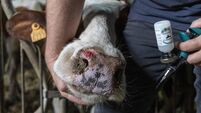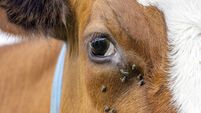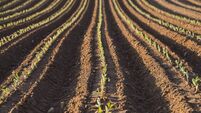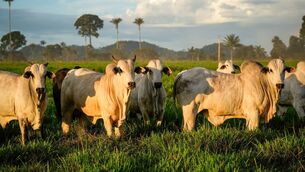Finding answers for new entrants to dairy sector
Young farmers are asking what new processing facilities are required and who will put them in place, plus product research and development, and the types of products. And what markets will buy our additional produce?
Funding the future expansion of the industry is a thought crossing every dairy farmer’s mind — and here, Bill Keane from Waterford shares some of his views on dairy expansion.
He is a recent new entrant to the dairy sector and a member of Macra’s National Agricultural Affairs committee.
Bill recently completed the young dairy farmer directors course run by ICOS in conjunction with Macra.
>>Accessing credit to fund setting-up costs is a major challenge for young farmers starting a dairy enterprise, as the whole process carries a certain amount of risk. In the current banking climate, it is very difficult to secure a loan to get up and running, especially if the young farmer is only renting the land. Generally the banks won’t give a loan on this basis, and asking parents to go as guarantors is not an option for a lot of young farmers, with the chance that the business goes belly-up and they could stand to lose everything. The closure of installation aid had a major impact on young farmers, and subsequently young farmers find it increasingly harder to secure loans.
>>No, farmers and processors need to take a long-term view and not undermine their future production base, which is young farmers. Investment in processing for will support and benefit all milk. From an economic point of view, the volume of new milk will be too small to fund the cost incurred, so it should be spread out across all milk, and I believe no one co-op should be building a plant on its own.
>>All farmers should have an involvement. There is also the possibility of a revolving share plan; for example, a cent a litre over five years, and pay it back to the farmers after a period of time in terms of shares or in cash. It will help the co-ops keep the interest rates down.
I think farmers should not be asked to invest in more than 30% of capital expenditure.
The Irish Dairy Board should be more involved in the expansion plan. Farmers expanding will have on-farm costs of up to €4,000 a cow by the time EU regulations are complied with, therefore it will be very hard on the farmer to pay towards building a milk processing plant. There is scope for a mixture of funding from farmers, the Irish Dairy Board, processors through cash reserves, and debt, along with assistance from the State.
>>The new agreements post 2015 should have no tradable value. I think there needs to be some form of licence to supply milk after 2015, this will ensure there will be no disruption to supplies and also give certainty and security to dairy farmers young and old. If we didn’t have any form of licence, I don’t know how co-ops could plan, not knowing how much milk would be supplied from year to year. Many farmers look at their quota presently as a target, and aim to come close to filling it each year. In terms of new entrants, co-operatives should provide a supply right of a reasonable volume, say 300,000 litres per new trained entrant under 35 years of age, as an encouragement to start, at no entry cost. Co-operatives should set a target for the number of new entrants required annually to sustain and grow the supplier base, based upon the profile of existing suppliers and forecasts for expansion.
>>There has to be, we have the 2020 food harvest targets set out, plus the world population is growing rapidly. Presently, Ireland is able to produce enough food to feed 36m people. By 2050, we can potentially be producing enough to feed 50m people, and there is no more land being made. We need to be extremely efficient in producing milk. Farmers will have to monitor their costs at all times as we will be in a volatile market. There will also have to be a favourable tax regime provided by the Government to cover the good years against the loss-making years, for example, Australia has a good model. It helps keep farmers in business, otherwise we will only be busy fools running faster and making less money.
>>Yes, they are all thinking along the same wavelength, wanting to deliver more for the farmer, but we do need processors to give clear signals so farmers can plan. I believe we need to make more use of the Irish Dairy Board and model them like, for example, Fonterra. By selling through one identity we hope to get a better price for our dairy products. There is no point in all the co-ops competing against one another for foreign markets, only knocking down the price of the product, and it’s always the farmer who takes the cut, why not the supermarkets? For young farmers looking at the prospect of entering dairying, they will be making fundamental decisions on-farm in terms of scale, type of production, etc, and are looking at the industry to provide a signal, clarity, and opportunities in the years ahead.












